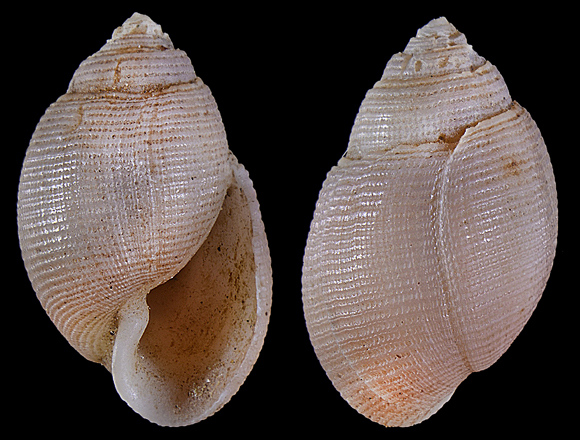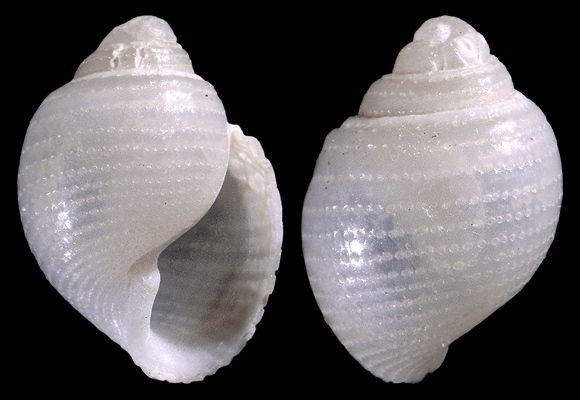
Protonym: Tornatella pusilla.
Above and below: specimen dredged at 420m deep, Capraia island, northern Tyrrhenian Sea. 9,7mm. Original pictures provided by A. Nappo (IT) – (CC BY-NC-SA).

« Shell globose-ovate, white; whorls 4, adorned with regularly and deeply punctate striae; aperture oblong. » – E. Forbes: “Report on the Mollusca and Radiata of the Aegean sea, and on their distribution, considered as bearing on geology”, Reports of the British Association for the Advancement of Science for 1843, London 1843, p.191.
« The shell […] is always slightly coloured, sometimes of a dirty white but more usually pale orangey pink. The largest individuals are 11mm long for 6mm width: they have then six whorls of spire. […] The shell is adorned with spiral cords formed of oval cupules in chains, regularly arranged from from the suture down to the base of the last whorl. There are 25 to 30 cords on the last whorl, 5 to 8 on the penultimate. The columellar fold is weak but still visible; there is no umbilicus. » – P. Bouchet: “Opisthobranches de profondeur de l’Océan Atlantique: 1 - Cephalaspidea”, Cahiers de Biologie Marine, january 1975, p.325.
« The shell […] is always slightly coloured, sometimes of a dirty white but more usually pale orangey pink. The largest individuals are 11mm long for 6mm width: they have then six whorls of spire. […] The shell is adorned with spiral cords formed of oval cupules in chains, regularly arranged from from the suture down to the base of the last whorl. There are 25 to 30 cords on the last whorl, 5 to 8 on the penultimate. The columellar fold is weak but still visible; there is no umbilicus. » – P. Bouchet: “Opisthobranches de profondeur de l’Océan Atlantique: 1 - Cephalaspidea”, Cahiers de Biologie Marine, january 1975, p.325.
